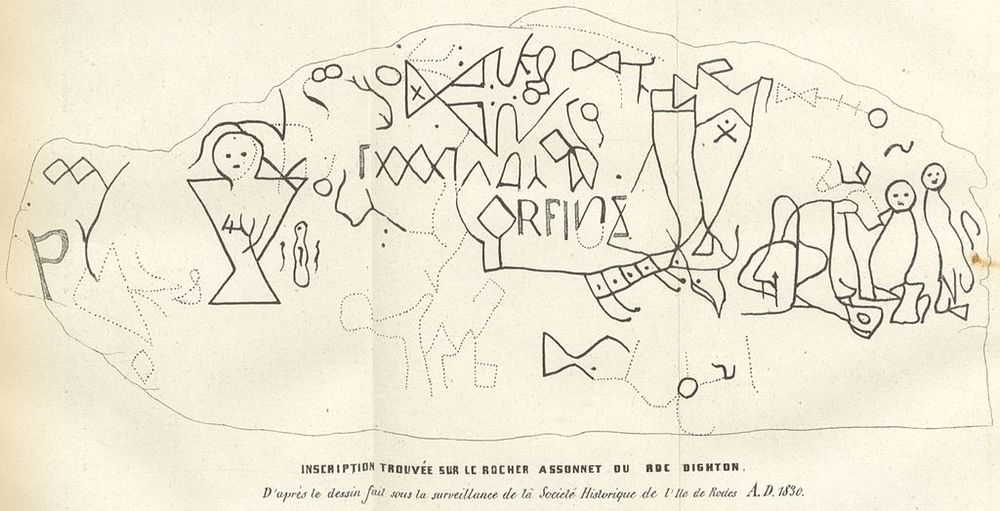The Dighton Rock in 1893.
The Dighton Rock is approximately 5 feet high, 9.5 feet wide, and 11 feet long.
One of the first mentions of the Dighton Rock can be found in 1680 when the English colonist Rev.

John Danforth made a drawing of the petroglyphs, which has been preserved in the British Museum.
However, Danforths drawing conflicts with other reports on the rock at a similar time.
During the 19th century, many popular publications and public figures mentioned the rock.

A copy of the inscription on Dighton Rock.
Dighton Rock formed the last link in a long chain of evidence.
Delabarre found gross discrepancies between the societys actual drawings and the doctored-up copies reproduced in Rafns book.

Apparently, Rafn had added many lines to the drawings to support his theory.
In this place, by the will of God, I became a chief of the Indians.
But who was Miguel Cortereal?
Later, the ship carrying Miguel failed to appear at a designated rendezvous.
Cortereal lived with the Wampanoags for several years keeping close watch for vessels along the coast.
Delabarres theory is widely accepted in Portugal, but not much elsewhere.
When Roadside America visited the museum, they found that they were the only tourists.
References:# Edward Brecher,The Enigma Of Dighton Rock,American Heritage#Roadside America